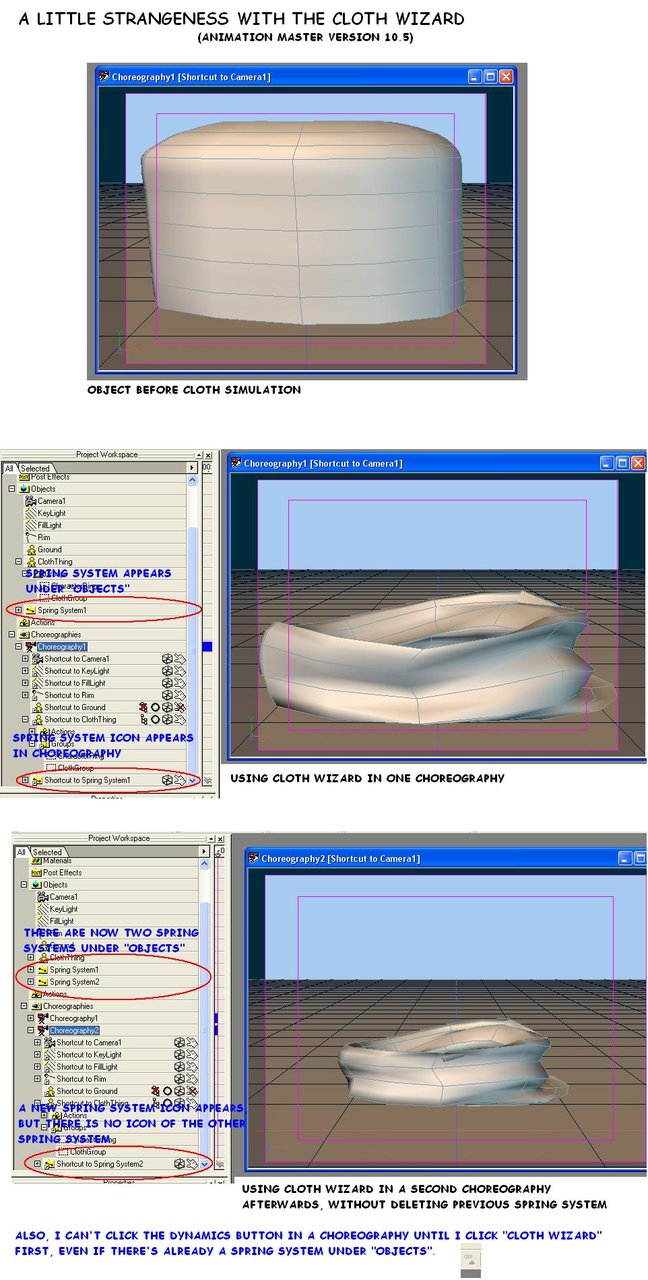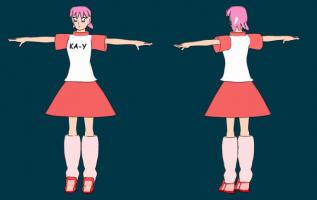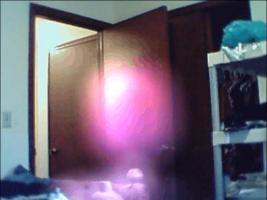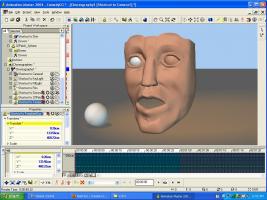
TigerGuy
-
Posts
27 -
Joined
-
Last visited
Content Type
Profiles
Forums
Events
Posts posted by TigerGuy
-
-
Wait, I have a guess about what's happening. Tell me if I'm wrong:You'll need a program like Winzip to zip files. 7-Zip is free.There are a couple conditions for camera tracking. One, the scenery has to have enough lighting to fully track. Two, there has to be a fair amount of stiff objects sitting around, at least enough to cover sufficient dots with (I may have been mistaken when I assumed that the software could track my cats movements).
If I experiment with these ideas, and if everything turns out all right, you may not need to look at the footage and data or whatever else. Thanks for the discussion.
-
-
I'm afraid I don't know how to zip things.From the A:M project file I can not see what causes the problem. Can you upload the Voodoo file if you zip it? -
Here's the project. The Voodoo file wouldn't upload, and the video file never finished uploading (hopefully not because of the other processes going on).There are many reasons the captured data could get incorrect. How do the tracked points in Voodoo look when you scroll through the video? are they really sticking to the same points on objects? I've noticed sometimes it can be very hard to get good tracking results even when all objects seem easy to track with the eye. Things like compression or interlacing (or wrong setting) can make it unreliable. Are you able to get good results with other videos? It takes some experience to learn why a video is hard to track.If you're sure the video is tracked correctly you may post the video, voodoo file and A:M prj file exported by Icam here or post a link. Then I can take a look to see what the problem is.
-
The title and description pretty much sum up the problem. It seems that after using Voodoo and Icam, only so much tracking is captured for A:M. After a second of decent tracking, the camera starts to skip around and/or get stuck on some random angle.
Is it the lighting? Is it too much camera movement? Did I make the video too long? I hope I can find out.
-
I put a deflector on an object, and "cloth" simcloth on her clothes, and the cloth ripples when simulated. How can I make the cloth act more natural?
-
I saved the video as a Targa, and got a bunch of individual frames instead of a single video. Is that how targa's work? How do I use them?when I use video captured by Premiere, the video doesn't even show up.Do you mean "Doesn't show up in A:M"?
Video for A:M needs to be either a Targa sequence (Premiere can export that) or in Quicktime. Some quicktime codecs do not work well with A:M.
PhotoJPEG or "Animation" would be good first tries.
Targa sequences are usually best, however.
-
I mean, as a Rotoscope, the video is entirely blank and silent.when I use video captured by Premiere, the video doesn't even show up.Do you mean "Doesn't show up in A:M"?
Video for A:M needs to be either a Targa sequence (Premiere can export that) or in Quicktime. Some quicktime codecs do not work well with A:M.
PhotoJPEG or "Animation" would be good first tries.
Targa sequences are usually best, however.
Thanks for the advice.
-
I have Adobe Premiere Pro, and I want to do some special effects, but when I use video captured by Premiere, the video doesn't even show up.
-
It seemed to render fine when I set the resolution to half the size I originally planned.By the way, does the message "Failed InitBoundRenderInfo" make sense to anybody? That's the message I keep getting when I try to "render to file" as a tga image in wireframe that's 4860 pixels by 7200 pixels.Its been quite awhile since I saw that message but as I recall I use to get that occassionally when I attempted a wireframe or shaded wireframe render. What was odd about this is that if I changed my video driver in A:M's Options Panel (from Direct3D to OpenGL or vice versa) the problem would go away.
I've been told that A:M's renderer doesn't use the graphics card but I cannot escape what my experience tells me. Perhaps when rendering wireframe/shaded wireframe A:M borrows from the realtime render driver? I dunno.
At any rate... try changing your driver in TOOLS/OPTIONS on the Global tab.
-
By the way, does the message "Failed InitBoundRenderInfo" make sense to anybody? That's the message I keep getting when I try to "render to file" as a tga image in wireframe that's 4860 pixels by 7200 pixels.
-
Do you change the option under "format", or do you put ".jpg" or ".tga" or whatever in the title?set your start frame and end frame numbers to be the same and make sure you are rendering to a file format that is not a quicktime .mov or .avi. For a still you would render to yourfilename.tga, .jpg, or .pngEither way, after this is done, can I actually load the file into Paint or Photoshop or whatever?
Yes you should be able to load this image file into photoshop (I don't know which image formats Paint handles).
when you click on the filename in the render to file dialog, the standard windows dialog box will come up - when you set your filename there - you will see options for what type of file you can render - you set the filename & type there just as you would for any other windows program. If you are on a mac - then I have no idea, but would assume something similar happens.
If you know how to use photoshop - then you know how to save and set filenames and types
EDIT - when you return from the windows dialog - make sure the A:M dialog box reflects the correct filename and type. You can always then change the type in the A:M dialog - by clicking on format
Um....There doesn't seem to be an option for jpg or bmp. I wonder if it's because I'm using Animation Master 2004.
-
Do you change the option under "format", or do you put ".jpg" or ".tga" or whatever in the title?set your start frame and end frame numbers to be the same and make sure you are rendering to a file format that is not a quicktime .mov or .avi. For a still you would render to yourfilename.tga, .jpg, or .pngEither way, after this is done, can I actually load the file into Paint or Photoshop or whatever?
-
I've tried the "render to file" button, but how do I set it to render just an image instead of a movie?Adding the attached screenshot for any Newbies who don't know where the Render Button is: -
This is for a school project. I want to export a rendered image from a choreography. I need a very specific file size, so simply using "print screen" isn't going to work for me. Does anyone know what to do? Thanks.
-
Yeah, that's good advice. I just get carried away sometimes, doing a lot of work before saving.though it never occurred to me.We've got to find a good way to suggest that everyone Right Click often.
So many options and solutions are revealed via a simple Right Click.
Every new user should set aside a day to do nothing but Right Click and explore whats there!

Roberts suggestion to Save first cannot be stressed enough either.
If you save first you can always abandon any effort... throw it away... gone forever... with the confidence that you can return again to your last Save and press forward again.
A good workflow in A:M will always include Right Clicking and Saving.
Doing both often... makes even better sense.
Maybe we should request a Save function via every Right Click menu. That'd help us emphasize both of these essentials.

-
Since I've already made a bad simulation, I think I'll first try deleting the splines folder. Thanks again.Right-click in chor>remove simulation data?I forget if that applies to cloth or just dynamic constraints.
You can also delete cloth sim data by deleting the Splines folder under the object in the PWS.
And of course it's good practice to save a version of your work before you run a sim so you have an easy way to revert.
-
Um, it seems I need to adjust the collision or something. Is there any way to undo the simulation?You can right-click in the Chor window>Plugins>Simcloth Simulate -
Good. Thanks. I thought it would be an easy question, though it never occurred to me. I'll try it the next time I use the program.You can right-click in the Chor window>Plugins>Simcloth Simulate -
I've added a Simcloth material, but "simulate spring systems" doesn't get the simulation going. Am I pressing the wrong button or something?
-
I've been using Version 15 or higher, but now I've upgraded it, and I need an activation code I can't find. In other words, I can't use my latest version right now. That's why I used pictures of the older version I had, 10.5.This is where I don't see the advantage of re-using a cloth object after it has been simulated.All the motion and folding and stretching is baked in at that point.
But you're on v10.5. The current cloth is quite different; there is no "spring system" in the PWS like there is in 10.5.
Another problem for you, unfortunately, is that there will be no one here who is an expert on 10.5 cloth. It's not in the current versions and the new cloth has been much more successful.
-
Does that mean it would move the same way each time it's used, or can it be re-simulated?As far as your SimCloth Q: Do your SimCloth simulation, and once happy with it you can export it as an 'action'- and that action can be reused in different choreographys. -
I thought I did attach a picture. I don't know why it's not showing up. I'll try attaching it to this post.(I don't see a picture.)the cloth simulator in V13 and later is not the same as the one in V10.5
There are tech talks you can watch on dynamic constraints and cloth.
I've had good success with the new cloth simulator. I don't agree that it is inferior to the one in v10.5.
Physical simulations like cloth ARE time consuming to get right because there are so many options that must be set right of specific situations

Ah. Looks like that worked. I just didn't understand the attachment system as well before.
Thanks for the tech talks, and the cloth simulation you did looks perfect.
-
Well, I would give a more specific example, but I'm unable to use version 15 of Animation Master right now; it's hard to explain, but basically, I'm waiting for Support to tell me how to get an activation code for the update I downloaded.
I suppose so, but supposing you make your own spring system, like for a fat guy's stomach?I assume this means I can reuse this one spring system in other choreographies, instead of clicking "Cloth Wizard" every time,I had never thought of it that manner and I'm doubtful it is meant to work that way. Anyone?
I think if you find cloth wizard settings that work well in one instance... remember them ( to paper?) and use them as a starting point with the cloth wizard for your next outing.
Typically, people have been doing that sort of thing with dynamic constraints. See the "Hunter" vid on AMFilms
If a spring system has already been made, it doesn't show in any choreography created afterwards. It doesn't even allow you to click that spring mode button (or whatever it's called), unless you activate the Cloth Wizard and start a new spring system.Also, to keep cloth effects in future choreographies from messing up, you'll probably have to delete the previous spring system first, but then the simulation in the previous choreography is lost (So you'll want to hope you've rendered it already).
I'm very unsure of what you mean by this description. You may need to show an explicit example of what you are trying to do. I'm thinking maybe you are using the wrong tool for the wrong effect.
Thanks for responding. If I can't go with reusing spring systems, I'll just go with your suggestion of writing down the cloth settings.
PS: it occurs to me that you dont' need to write down cloth settings on paper because cloth setting are something you set in a cloth "Material" which is saveable as a file and re-useable. Right?
I'm attaching a picture to show what happens with Cloth Wizard in version 10.5. The only difference from version 15 is that the cloth effects don't screw up in either of the choreographies demonstrated, aside from some possibly adjustable collision problems.
By the way, how do I use cloth as a material? Also, the dynamic constraint option for anything but clothes sounds good, but is there any way to program collision of any kind?











A Little of my Progress.
in Work In Progress / Sweatbox
Posted